How can large models be applied in cars? The direct implementation that probably comes to your mind is AI drawing a diagram, but you might not realize that a large model of voice recognition can be incorporated in cars so quickly.
Just last night, we got a firsthand experience with the Xunfei Spark Cognition large model not on a mobile phone, but in a car. The car can be activated with voice commands enabling natural conversation with the voice assistant. This car is the upcoming EXEED Star Era ES set to launch in Quarter 4, directly benchmarking against the Tesla Model S. 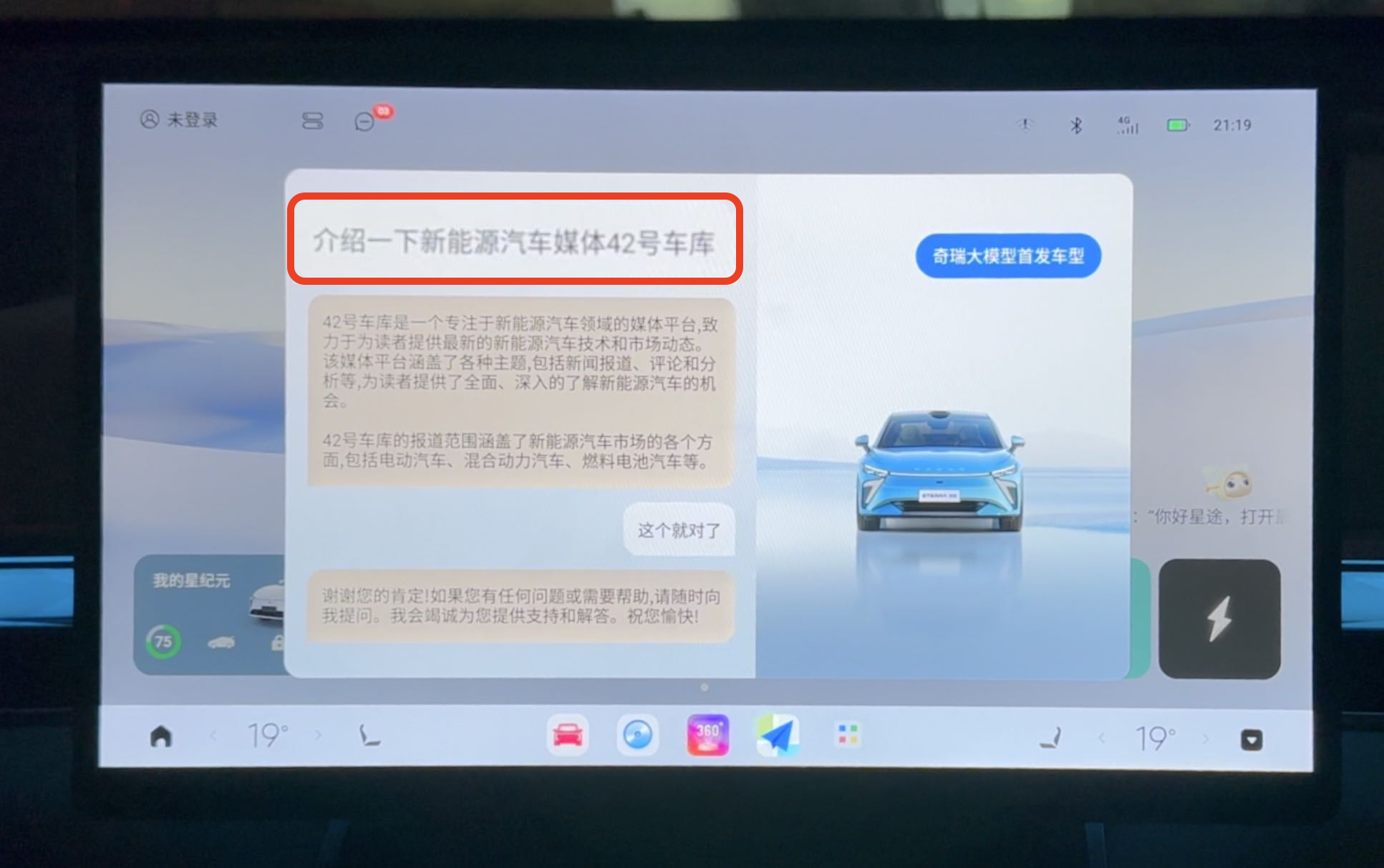
Trust me, after experiencing the ‘LION AI’ large model platform, I consider other in-car voice assistants almost at the level of ‘imbecility’.
Introducing Garage 42
In just a few minutes of experimentation, the engineer and I took turns questioning, starting with the simplest emotional commands.
‘LION AI’ can tell you a joke when you say, “I’m in a bad mood today” and if you’re still not appeased, it can comfort you.

‘LION AI’ large model can plan your trip if you’re caught between different attractions for a self-drive tour. If you’re particularly keen on one scenery spot, it can provide a more detailed introduction.
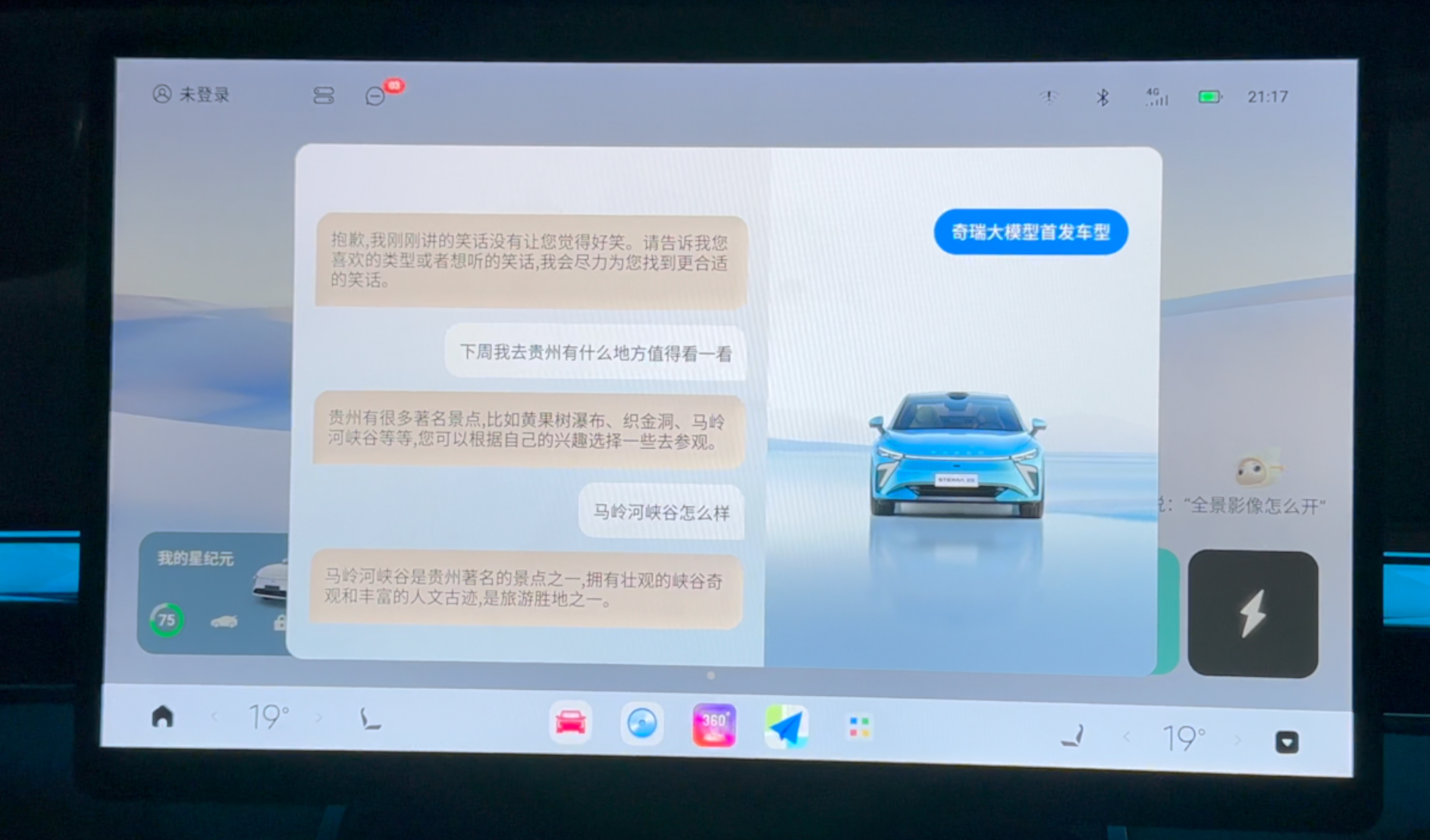
The ‘LION AI’ takes it a step further by understanding what you’re saying rather than providing reactionary feedback based on set rules.
For instance, it can advise you on confessions of love or how to write a love letter. To the existing smart voice system, these queries may only yield a “I don’t know how to answer this” response.
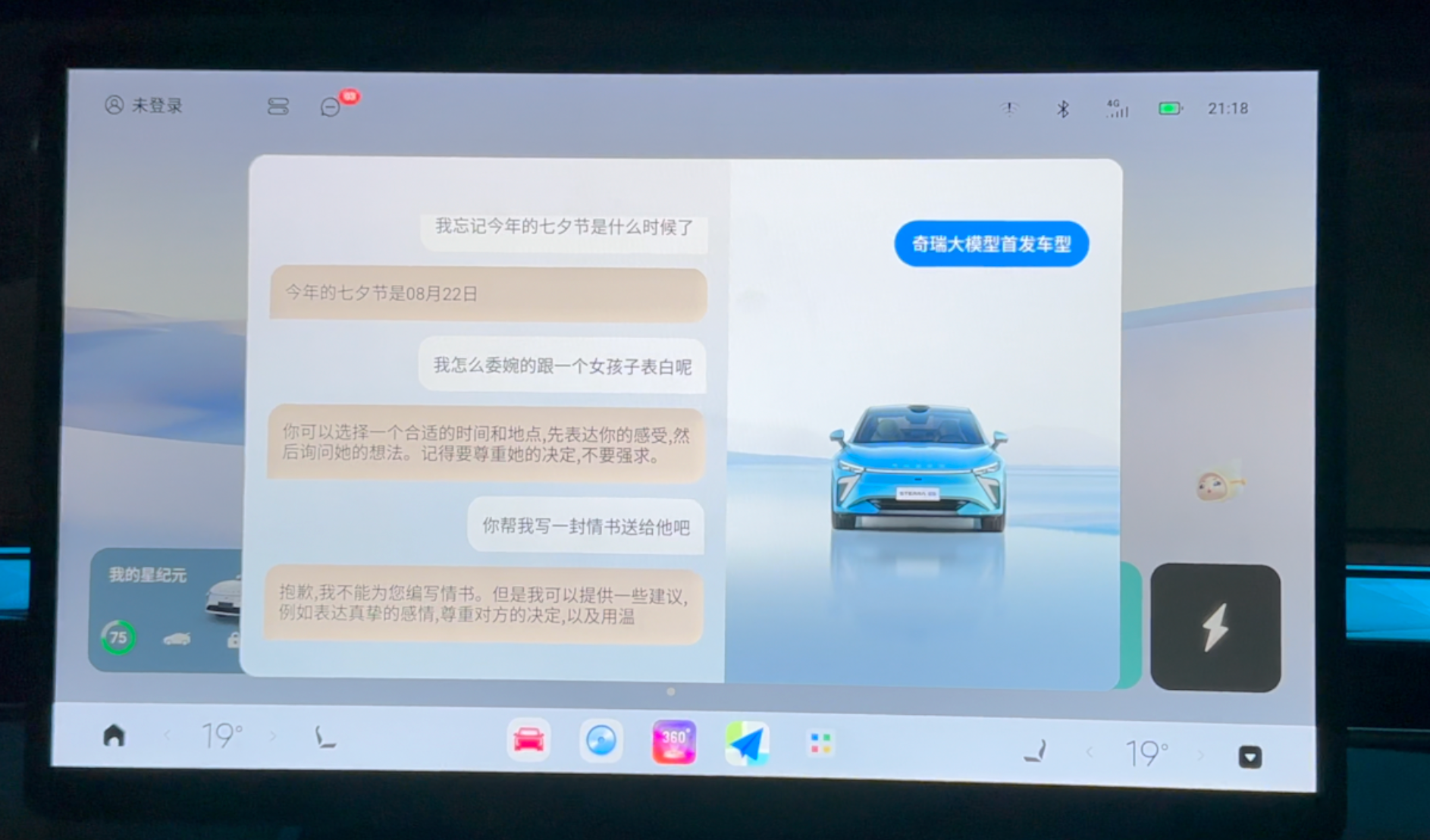
Lastly, I got ‘LION AI’ to recommend 10 top notch new energy automobile media and gave a brief introduction on Garage 42, each query was answered exceptionally precise.
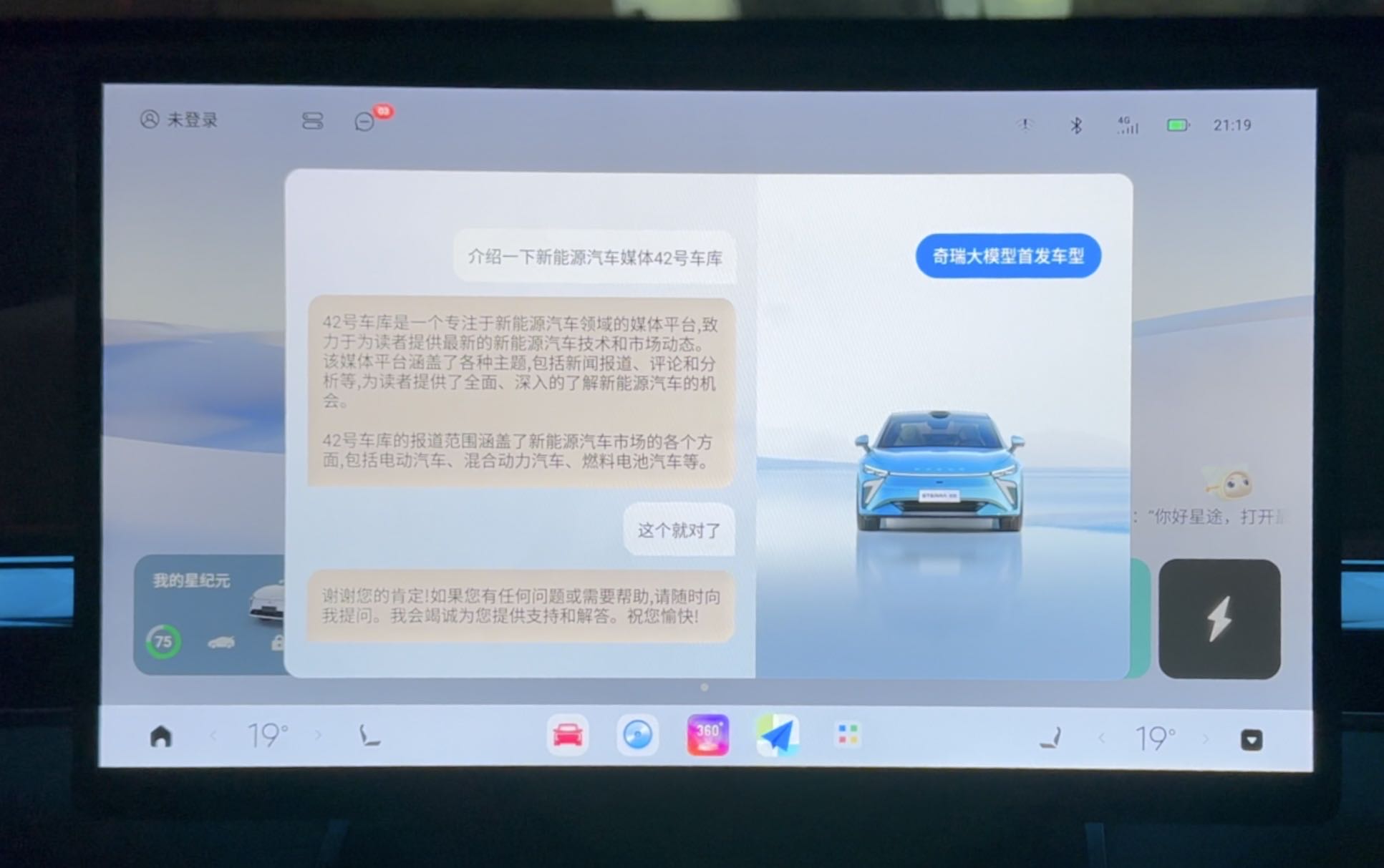
When you input complex emotional or even vague commands, ‘LION AI’, after a massive amount of cloud computation, can control the response time within 3 seconds. The latency is acceptable, almost equivalent to the response speed of the currently popular ChatGPT, performing very impressively.
Unveiling the Underlying Structure – Distributed in Three Stages
On the technical level, how?Dr. Gao Xinhua, Executive Vice President, Head of R&D Institute, and CTO of Chery Automobile Co., Ltd., introduced the four tiers of the “LION AI” large model platform.

The first tier is the application layer, which is the interactive level between users and the automobile system, including various applications and functions. Based on the intelligence of the large model, it covers intelligent cockpit, intelligent driving systems, vehicle health management applications, and energy management systems.
The second tier is the cognitive large model layer, the core application level of the large model, used for data and scene analysis, providing advanced cognitive abilities such as deep learning, natural language processing, and image recognition, encompassing deep learning models, natural language models, and image processing models.
The third tier is the training and management of the large model. This level specifically handles the training, management, and duplication of the large model, ensuring the model’s efficient operation and continuous update. It includes large-scale training sets, distributed training, and model deployment and updates.
The fourth tier is the data layer, the foundation of the entire platform’s data, including data collection, storage, processing, and access interfaces. It encompasses sensor data, vehicle data, geographic data, and voice and text data.
Dr. Gao said, “These four levels address the demand of the AI platform aimed at large model cognition, clearly supporting each level and supporting the intelligence and electrification development of vehicles.”
The “LION AI” large model platform plans in three stages and six capabilities.

The first phase mainly includes in-car voice assistants, which, beyond just providing common features like navigation and music, need to possess higher-level AI capabilities. They should understand user needs, provide personalized services, and even empathize with drivers.
The second phase is aimed at product-level applications. One direction is the fusion of intelligent driving and intelligent cabins, and the other is transitioning from single-mode to multi-modal generative artificial intelligence.
The third phase focuses on enterprise applications and divides into three scenarios. The first is product marketing services, where vehicles can self-introduce and market, allowing consumers to know the vehicle better. The second is the digital upgrade of the enterprise, upgrading traditional manufacturing to a digitized intelligent enterprise. The third is edge computing and intelligent analysis, enabling computation in-vehicle.
EXEED star epoch ES will be launched in the fourth quarter
The model that will initially equip the “LION AI” large model platform is the EXEED star epoch ES, which was announced by EXEED this year and will be launched in the fourth quarter.
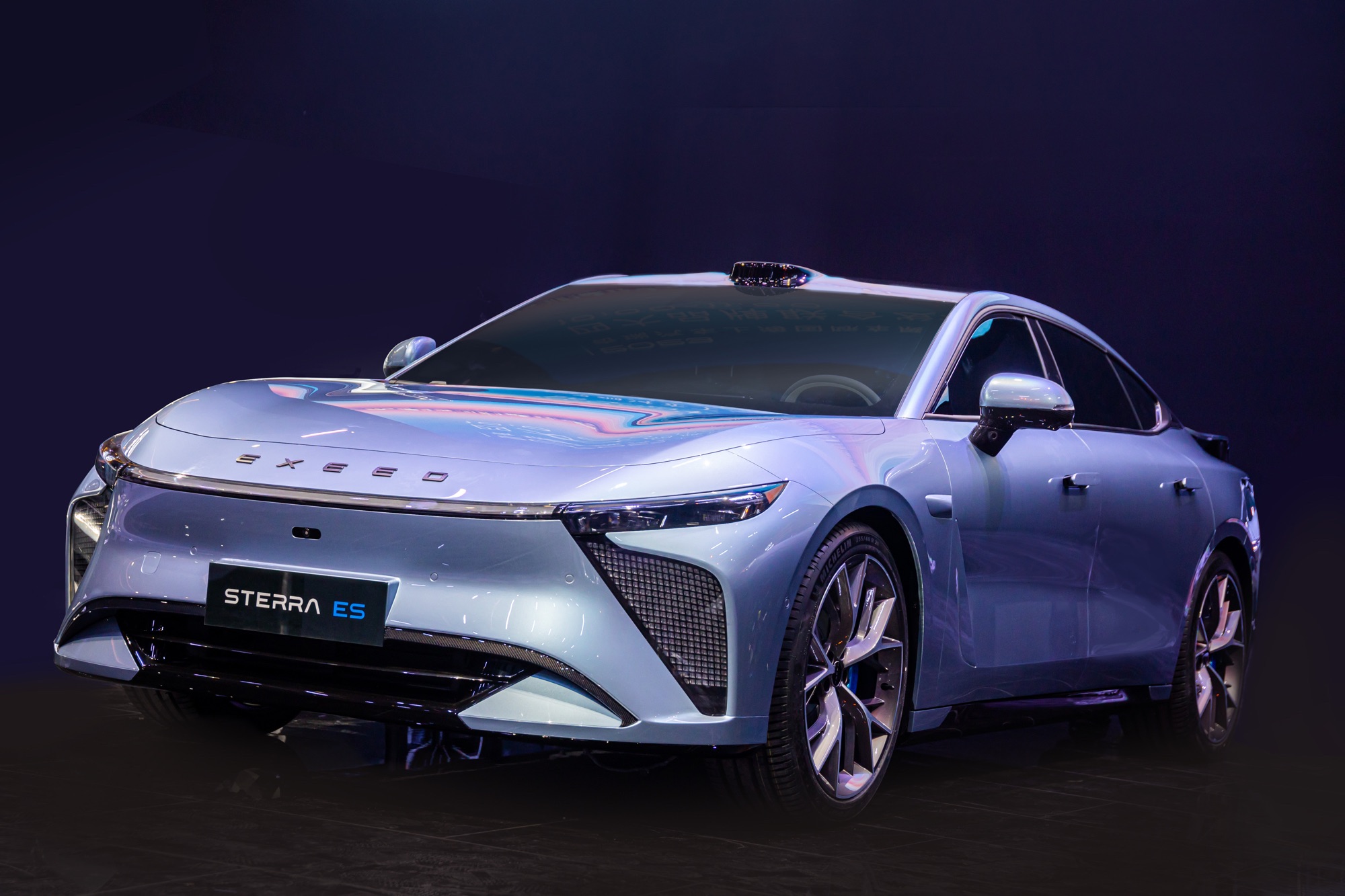
The EXEED star epoch ES aims to directly compete with the Tesla Model S, and describes this model as “world-class”.
In terms of space, the star epoch ES and Model S are essentially the same, with L/W/H dimensions of 4,945 mm/1,978 mm/1,467 mm respectively. However, the interior space layout of the star epoch ES is more superior than the Model S.In terms of comfort and power configuration, Star Journey ES comes standard with air suspension + CDC, double wishbone front and five-link rear suspension across the range. The dual-motor model manages a 0-100 acceleration time of 3.7s and there will also be a single-motor model. For a sedan, it boasts a relatively low drag coefficient Cd of 0.205. Moreover, its turning diameter is 11.4 meters.
Additionally, it possesses low energy consumption. As Dr. Gao Xinhua points out, Star Journey ES is the nation’s “first domestic brand sedan with mass-produced 800 V high-voltage platform”. It can achieve a range of 150 km with just 5 minutes of charging. The lowest energy consumption per hundred kilometers is 11.7 kWh (for rear drive model), and the maximum range can reach up to 720 km.
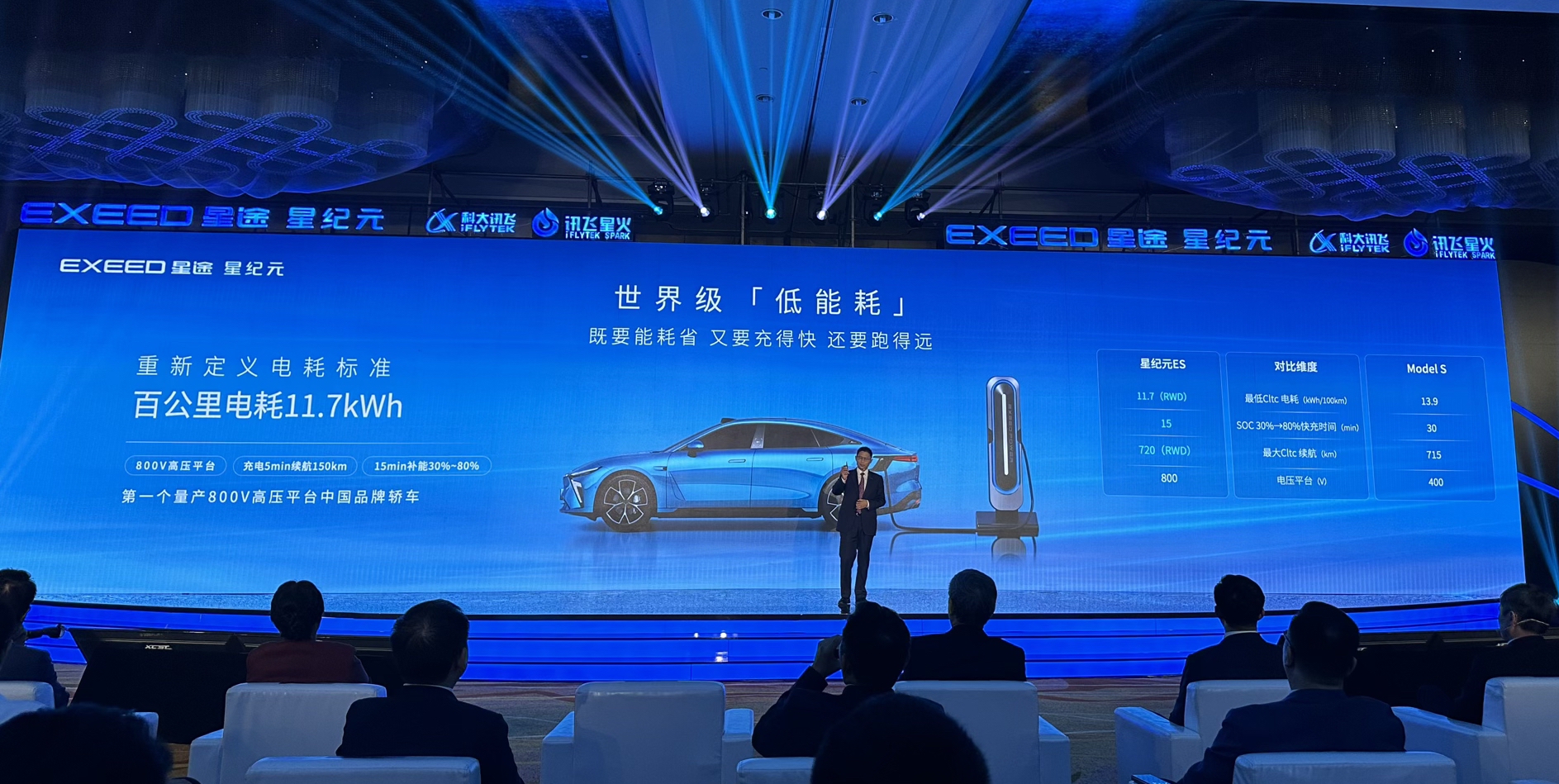
Finally, it has sophisticatedly configured intelligence. The assisted driving feature realises point-to-point assisted driving in the city and on highways, and also offers a memory parking function, with a chip power of 512 TOPS. The intelligent cockpit features a 15.6-inch screen and an 8155 chip. Most importantly, it integrates the “LION AI” big model platform.
To Conclude
Amid the hype of big models and transformative intelligence, numerous automakers are rushing to integrate large models. Benz was the first off the mark, announcing integration with ChatGPT. Subsequently, LI released Mind GPT, which is also set for integration. As a traditional self-owned brand automaker, Chery is also a pioneer by bringing in iFlyTek Starfire’s large model.
In this age, consumer demand for intelligence, novelty, and vitality is growing. If automakers want to make good cars, they cannot do without the continuous exploration of intelligence, as well as the empowerment from AI companies in the industry.
This article is a translation by ChatGPT of a Chinese report from 42HOW. If you have any questions about it, please email bd@42how.com.
